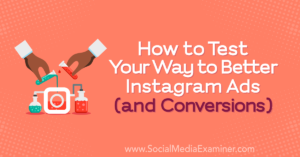
Sustainability today needs to be at the core and forefront of your business. If not, it is akin to driving a luxury car while looking at the rear-view mirror.
According to Jochen Zeitz, CEO of Harley Davidson, “Sustainability is no longer about doing less harm. It’s about doing more good.”
Just as COVID-19 fundamentally changed the way businesses operate and put technology at the front and centre, we are seeing businesses undergo a similar shift in their thinking on sustainability.
However, it is important to understand how we ensure it doesn’t become a tick-in-the-box but a fundamental shift in mindset.
Digital transformation and sustainability are key to the future of the manufacturing sector, especially in a rapidly growing developing economy like India. Organisations will either adapt and thrive, or fail to transform and perish. It is no longer a matter of if but when the discussions will start in the manufacturing companies’ boardroom.
Beyond environmental, cost, regulatory, and other advantages, one of the primary drivers of this change is consumers. A global survey by HP revealed that Indian parents are now worried about the impact of climate change on their families and are willing to pay more for sustainably manufactured products.
This shift in consumer demand is pushing manufacturers to adopt sustainable practices to remain competitive, starting with design and engineering methods, supply chain monitoring, and all the way through to final operations and packaging.
.thumbnailWrapper
width:6.62rem !important;
.alsoReadTitleImage
min-width: 81px !important;
min-height: 81px !important;
.alsoReadMainTitleText
font-size: 14px !important;
line-height: 20px !important;
.alsoReadHeadText
font-size: 24px !important;
line-height: 20px !important;

Part one of the solution: Implementing Sustainability 4.0
We are now moving the digital landscape from Industry 4.0 to Sustainability 4.0, where the latest innovations across digitalisation, AI, Machine Learning, IoT, and Data Analytics are used to achieve a business’ financial goals, as well as transform its sustainability agenda by improving shop floor processes, reducing waste, and lowering energy consumption.
It will enable functional teams to access data-rich insights and increase the ability to make informed, faster, and more accurate decisions on resource efficiency, reduce emissions, and streamline supply chain strategies.
For example, the Digital Twin technology can be used extensively to create virtual products and test the same during the product design phase before it gets into production. Such practices also foster transparency, traceability, etc.— a growing demand from regulators as well.
Through such data-led insights, organisations can focus on driving efficiency and optimise processes, which will translate into lower operational costs, higher productivity, and ultimately, improved profitability.
A classic example is Bosch. In early 2020, the company became the first global industrial company to achieve carbon-neutral production. It is developing green technologies that conserve resources, reduce energy consumption, protect the environment, and mitigate global warming.
In 2021, green tech for industry generated sales of over 800 million euros for the company.
The other half: A mindset of innovation
A research report from BCG read innovation is the only way to win the sustainable development goals (SDGs) race and achieve a sustainable future. Radical, disruptive innovation, particularly, can significantly shift the economics of possible solutions and the timeline for delivering them.
When we talk about innovation, we often do not go beyond ‘us’. That needs to change radically. One of the biggest ways to innovate, especially in sustainability, is to look at collaborative partnerships.
Lastly, innovation with sustainability in mind needs to begin right at planning and not post-production. For example, Nike engages with a wide variety of stakeholders on sustainability issues as part of product development.
Starting from using crowd-sourcing techniques to engaging with customers on the sustainability characteristics of its products, these processes are generating a range of new ideas on how to improve the supply chain, logistics, resource use, energy, and end-of-life cycle impacts.
The outcome
There is often a misconception that purpose, planet, and profitability cannot be intertwined. We live in an interconnected complex world, and we need to reimagine what we as businesses, societies, and individuals stand for. We need to find a harmonious balance of financial feasibility with environmental impact and change the impact it has on our planet and lives.
It leads us to naturally develop a new framework of thinking and implementation. I remember seeing an Apple advertisement post its Wonderlust event on LinkedIn—it was a new way of reporting and showcasing sustainability.
Apple has committed that by 2030, it aims to make all products carbon neutral through recycled and renewable materials, clean energy, and low-carbon shipping. A brand with purpose and sustainability at its core, and driving business growth and revenue simultaneously. Case in point, as reported by the media, the sale of Apple’s iPhone 15 series is estimated to have registered a 100% growth compared to the sale of the iPhone 14 series on the first day.
It is time for us to not only reimagine what sustainability means but reimagine how we operate in the new world.
I will end with what Nikki Giovanni once said, “A lot of people resist transition and therefore never allow themselves to enjoy who they are. Embrace the change, no matter what it is; once you do, you can learn about the new world you’re in and take advantage of it.”
Naivedya Agarwal is the Co-founder and CEO of Runaya.
Edited by Suman Singh
(Disclaimer: The views and opinions expressed in this article are those of the author and do not necessarily reflect the views of YourStory.)










